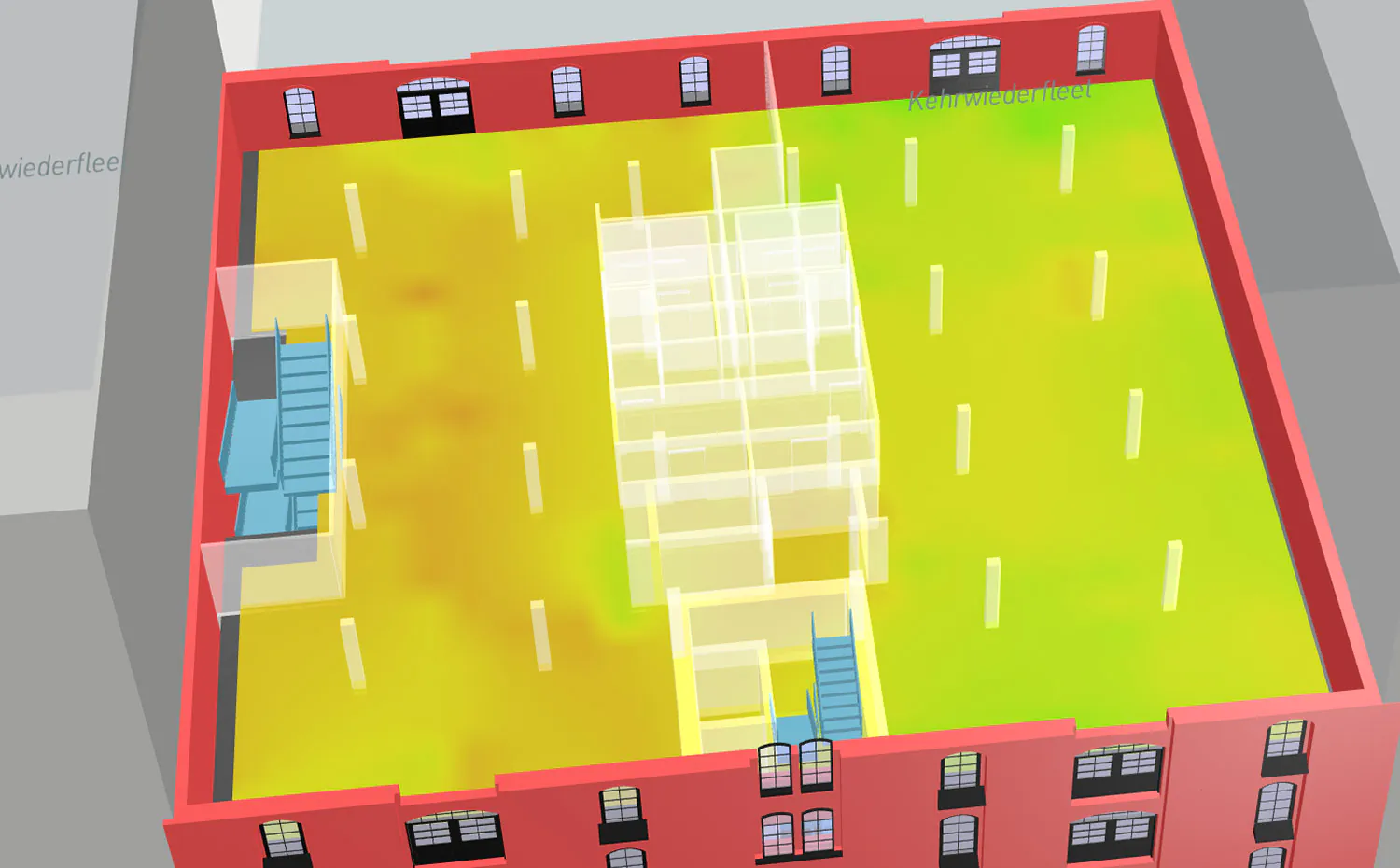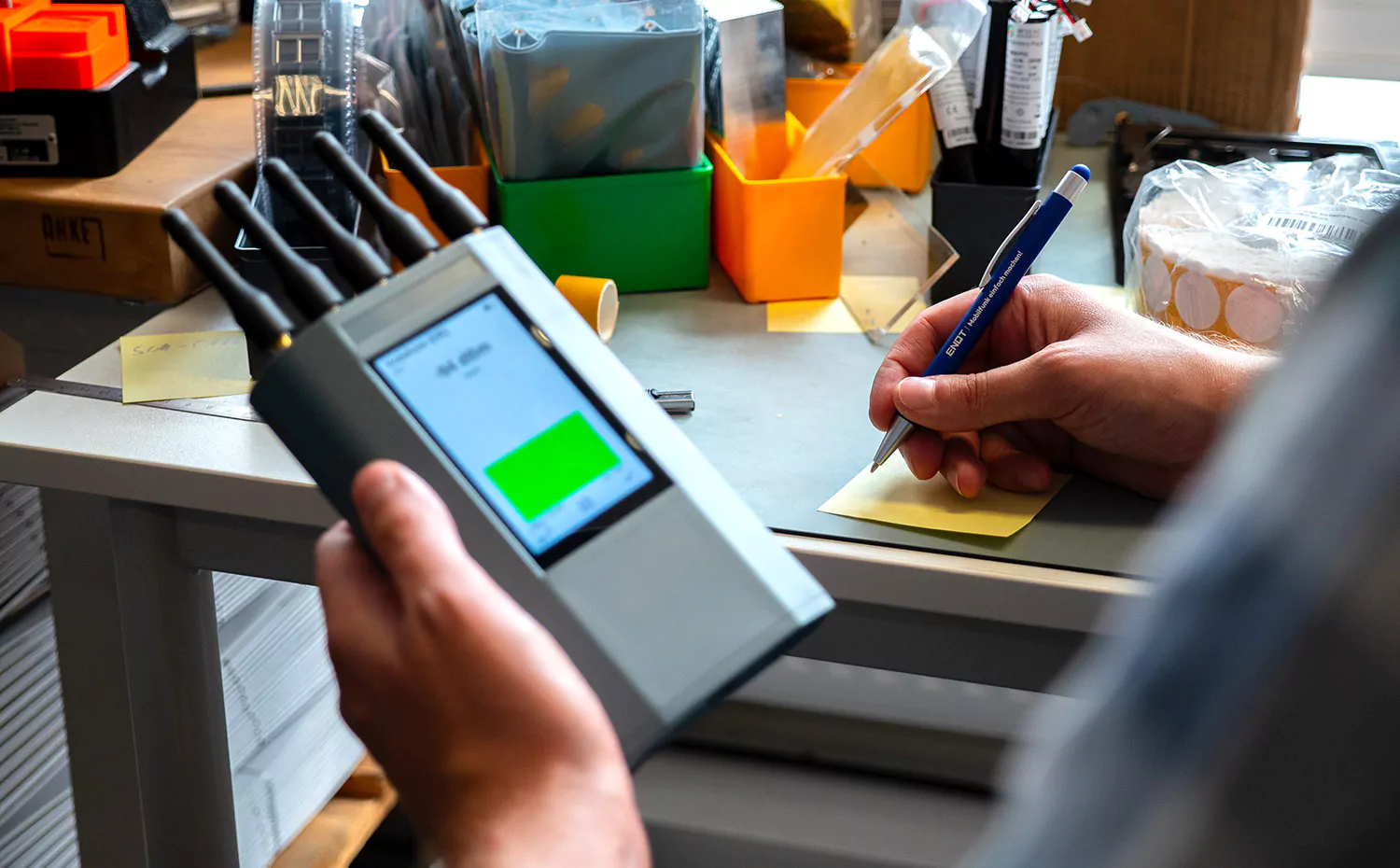In the worst case, mobile services can no longer be used at all. As digital transformation makes the availability of mobile voice and data services increasingly important, poor indoor mobile reception can become a real problem in both private and corporate environments.
In this article, we explain why good indoor mobile reception is becoming increasingly important, what factors influence reception quality in buildings, and how the reception situation can be improved. Finally, we introduce you to our ImmoCheck service, which precisely records the mobile coverage of your building.
Why good indoor mobile reception is becoming increasingly important
In both private and professional environments, smartphones, tablets or laptops have become almost indispensable. For companies, mobile communication is extremely important. Increasing digitization and the shift to an Industry 4.0 are networking more and more business-critical processes, devices or entire production facilities on a mobile basis. Data is exchanged via mobile networks or transmitted to applications on the Internet. Numerous IoT and edge computing applications require highly available mobile data transmission in real time with low latency. If there are disruptions in mobile coverage, this directly affects the company’s business operations. Processes are interrupted and complete production operations can come to a standstill. The efficiency, productivity and economic success of a company suffer severely from such disruptions. Only with a high quality of cellular reception can employees access important applications or services from anywhere. Good cellular reception, both outdoors and indoors, is essential and a real competitive advantage.
Why is cellular reception worse indoors than outdoors?
Even if a wireless carrier’s network coverage map shows a particular location with high signal strength as having cellular coverage, the situation inside a building can be completely different. Radio signals do not reach a mobile receiver unimpeded indoors. Walls, building ceilings, windows, furniture, machines and much more attenuate the signals, which is why signal field strengths inside buildings are usually significantly lower than outdoors. The exact attenuation values depend on many factors such as the frequency of the radio signal, the thickness of the walls, the materials used and others. For example, reinforced concrete ceilings and walls, windows vaporized with metal, or facade cladding made of metallic materials sensitively interfere with indoor mobile radio reception. In the worst case, they completely shield a room from the mobile radio signals of a radio mast.
Measures to improve indoor mobile radio reception
Various measures can be taken to improve indoor mobile radio reception. One popular solution is the use of cellular repeaters and additional antennas. It consists of three functional components: outdoor antenna, repeater unit and indoor antennas. Outdoor antennas receive the radio signals, repeater units amplify them, and one or more indoor antennas re-radiate them. In the opposite direction, the solution works in reverse.
Another way to communicate reliably inside a building despite poor cellular reception is to use so-called Wi-Fi calling. This is a standardized procedure in which the end device establishes an IPsec tunnel to the network of the mobile network operator via an indoor WLAN network and uses the services of the mobile network virtually via WLAN. The transmission is significantly influenced by the quality of the WLAN. Many devices such as modern smartphones already support Wi-Fi calling.
The operation of indoor small cells also provides a remedy for poor indoor reception quality. In this solution, one or more small base stations are installed inside a building. These small cells are connected to the provider’s mobile network via a directional antenna outdoors, for example, and span micro radio cells indoors.
Exact measurement of your building’s mobile coverage with ENQT’s ImmoCheck service.
The basis for an optimal mobile phone coverage in buildings and a planning of appropriate measures to improve the network coverage is to know exactly the current reception situation. For this purpose, you cannot rely on the network coverage maps provided by the mobile network providers. Although these provide reasonably reliable information about outdoor coverage, they use flat-rate, average attenuation values for statements about indoor network coverage, which they apply to the theoretically determined signal values in the outdoor area. This has relatively little to do with the actual reception situation in a particular room of a building.
The ImmoCheck service offers you a remedy. You receive a complete and precise measurement of the mobile phone reception situation in your building. In objects such as office buildings, production halls or rental buildings, extensive measurements are taken and evaluations are prepared. Highly qualified, specially trained employees carry out the measurements professionally. In addition to cellular coverage (2G, 3G, 4G, 5G, NB-IoT, LTE-Cat-M1 and LoRa), WLAN or wireless M-Bus coverage can also be taken into account. Within a very short time, a comprehensive and accurate overview of the current reception situation is created. The measurements are provider-independent (Telekom, Vodafone, Telefónica and others) and Europe-wide. The measurement data is processed and presented in our measurement data portal in a clear and easy-to-understand manner. Based on the measurement data and results, we give you concrete suggestions for improving indoor mobile reception.
These reasons speak for an indoor measurement and the ImmoCheck service from ENQT:
- Exact, up-to-date overview of the indoor reception situation
- Provider-independent measurements of all radio technologies
- Professional execution by a specially trained team
- Comprehensive preparation of measurement data and clear presentation of results
- Reliable identification of white spots in indoor mobile coverage
- Basis for planning secure and continuous data and voice communication
- Increased attractiveness and purchase or rental yield of buildings
- Improved sustainability of buildings
- ENQT’s many years of experience and high level of expertise
- Development of proposals to improve the reception situation
For more information on our ImmoCheck, click here.



